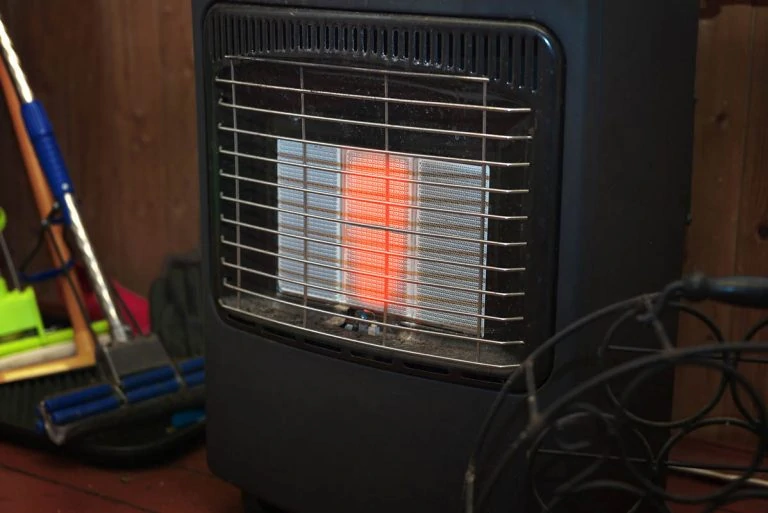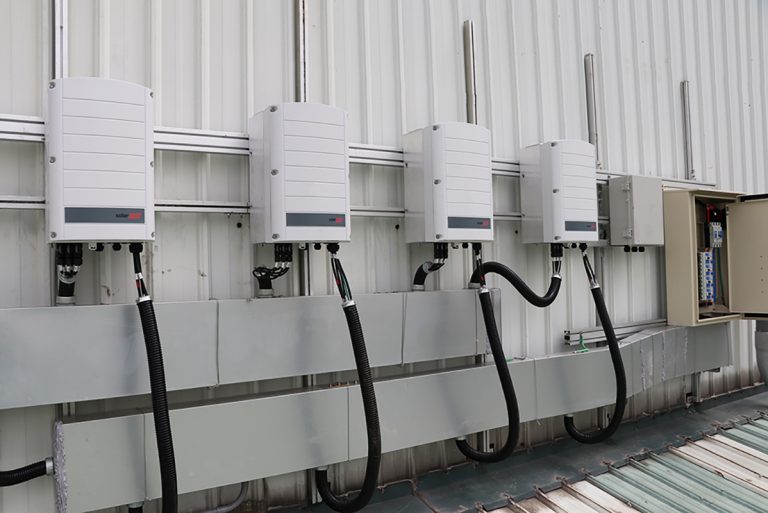Although the sun may not be the first thing that comes to mind when you think of the Land of 10,000 Lakes, but, according to the Minnesota Commerce Department, the state has similar solar resources to parts of Florida and Texas.
The state offers a range of excellent solar incentives as well as Minnesota energy rebates to encourage homes and businesses to explore solar power, meaning that investing in solar panels will not only let you be kinder to the environment, it could be good for your wallet too!
Minnesota Energy Rebates Explained
Minnesota has a long history of promoting eco-friendly policies, with its Conservation Improvement Program (CIP) dating back to the 1980s, and offers homeowners an excellent range of solar incentives and energy rebates.
In 2007, the state adopted a Renewable Portfolio Standard (RPS) which mandated energy goals for utilities. The same year, the state legislature passed the Next Generation Energy Act which requires the Gopher State to slash its greenhouse gas emissions by 80% between 2005 and 2050.
This led to a swathe of renewable energy incentives, particularly solar incentives, offered to consumers and businesses alike.
Furthermore, you can expect these incentives to remain in place for some time to come, especially when you consider that the RPS set the target of 10% of all retail electric sales to come from solar by 2030, but this rate is only about 3.5% at the moment.
In this guide, we’ll take a look at the best solar incentives available for Minnesota residents and other benefits of going solar if you live in the Gopher State. These incentives include federal incentives, as well as schemes only available to Minnesota residents and those living in the service area of specific utilities.
You can access net metering
Net metering is a fantastic solar incentive that’s available in various states, including Minnesota. The state was one of the first to introduce net metering laws in 1983, which apply to all investor-owned utilities (IOUs), electrical cooperatives, and municipal utilities.
This means that as a resident in the state, you get solar bill credits when you feed energy back into the grid. In Minnesota, you’ll be paid for your excess energy generation at least the average retail energy rate: it’s mandatory for all utilities to provide net metering for solar systems up to 40 kW, which covers almost all residential solar arrays.
However, the exact credit you’ll get depends on your energy provider – currently, Xcel Energy has the best net metering program for homeowners. Some utilities give monthly unused bill credits, while others accumulate the credits throughout the year and reimburse you for any remaining credits at the end of the year.
It’s a good idea to check how net metering works in your area, as this may affect how you choose to design your solar system.
You won’t need to pay sales tax
Another incentive that encourages Minnesotans to go renewable is sales tax exemption. You don’t need to pay sales tax when buying solar panels or other solar energy equipment in the North Star state!
The sales tax exemption applies to solar energy systems, defined as:
“a set of devices whose primary purpose is to collect solar energy and convert and store it for useful purposes, including heating and cooling buildings or other energy-using processes, or to produce generated power by means of any combination of collecting, transferring, or converting solar-generated energy.”
With state sales tax currently at almost 7%, this could represent serious savings when setting up a large solar system. Contractors should automatically include this exemption of quotes and invoices, so be sure to check that sales tax isn’t imposed when you buy or install solar energy equipment.
You’ll also get an exemption on property tax
The Minnesota equivalent of property tax exemption is their Wind and Solar-Electric (PV) Systems Exemption Policy. Under this policy, if your home’s solar system increases its assessed value, you won’t need to pay more in property taxes.
This policy aims to avoid homeowners being discouraged from investing in solar because it may lead to a property tax penalty. It also means that you can effectively boost the value of your home while saving on property tax.
However, keep in mind that property taxes will apply if you have a piece of land that is primarily used to generate solar energy.
You’ll get access to the Residential Clean Energy Credit
Of course, Minnesota homeowners also get access to the federal solar tax credit. Formerly called the investment tax credit (ITC), the Residential Clean Energy Credit could slash the costs of setting up a solar system by up to 30%.
Under the scheme, homeowners are eligible for a federal tax credit of up to 30% of the entire cost of equipment, labor, and permitting to install a system, for solar arrays installed before the end of 2032. From 2033 onwards, the federal tax credit drops to a maximum of 26%.
It’s important to note that to be eligible for the federal tax credit, you need to buy your solar system outright. This means you can either invest in your system by making a cash purchase or a solar loan, but you won’t receive this credit if you decide to lease your solar panels.
Furthermore, to get the full benefit of this incentive you’ll need to have sufficient taxable income. On the other hand, tax-exempt entities may be eligible for a direct payment as a further incentive.
Minnesota Energy Rebates: you have access to local and utility rebates
A range of utilities in Minnesota offer attractive rebates to homeowners in their service area who install solar systems. These include Xcel Energy, Solar Sense and Dakota Electric, as well as some local municipalities.
Xcel Energy’s Solar Rewards Program
Xcel Energy is the state’s largest utility company and, if you live in their service area, you can access their Solar Rewards Program, where you receive an annual payment based on your PV system’s energy production. Funded by the Minnesota Renewable Development Fund, the program gives homeowners a performance-based incentive to produce more solar power.
The utility company will pay you per $0.07/kWh of solar energy you produce for up to 10 years. You need to get in early, as once the program budget is fully allocated for the year, funding is not guaranteed, and you’ll need to join a waitlist.
SolarSense
The good news: this rebate covers up to 60% all of the costs to install your solar system, up to a maximum of $10,000. The bad news: it’s awarded via a lottery, so luck will need to be on your side!
To qualify, you’ll need to be a homeowner under the Minnesota Power utility and meet certain requirements in terms of system size and type, as well as the installer you choose. You can check if you’re eligible here.
Dakota Electric Association
Dakota Electric Association offers a one-time rebate of $500 to its customers who install home solar. Be careful though as, unlike some other utility rebates, you’ll need to submit your application and receive approval before you install your home’s solar array.
St Louis Park Solar Sundown
Under the city of St Louis Park’s Solar Sundown program, residents can receive a subsidy of between 4% and 6% of the total cost to install solar in their home. However, it’s only open to existing homes: homes and additions built within the last 12 months don’t qualify.

Shakopee
If you live in Shakopee and are connected to Shakopee Utilities, you could be eligible for a solar rebate of up to $1000. Like many similar programs from public utilities, the funding is limited and quickly gets fully-subscribed, so be sure to apply early to avoid joining the waitlist!
Austin, Owatonna, and Rochester Public Utilities
If you live in the cities of Austin, Owatonna, or Rochester, you’ll be able to access a solar rebate from your local public utility. These three cities offer a $500 rebate to all homeowners (as well as businesses) who install PV solar systems with 2 kW DC capacity or more.
You can also get a rebate of $15 per square foot of collector area for your solar hot water system in any of these cities. Just be sure to submit your application within 30 days of installation, and you’ll need to sign a net-metering and interconnection contract with the public utility.
Brainerd Public Utilities
If you’re in Brainerd Public Utilities’ service area, you can access a rebate of $0.50 per watt when you install a PV solar system in your home. The maximum rebate is $2,500, and only applies to systems up to 40 kW, which covers the vast majority of residential solar systems.
Minneapolis Green Cost Share Program
The City of Minneapolis’ ‘Green Cost Share Program’ includes solar incentives, but not for normal residential properties. The city’s solar rebate is only available to commercial, industrial, nonprofit, part of the City’s 4d Affordable Housing Incentive Program, or multifamily properties, the latter being complexes with three or more units.

Single-family and duplex properties can apply to the program, but only as part of a solar group purchase of five or more properties, of which 20% need to be environmental justice or income-qualified.
If your property meets any of these criteria, you may be eligible for a solar rebate from the City of between $0.20 and $0.40 per estimated annual kilowatt hours to install solar.
New Ulm Public Utilities
Finally, New Ulm Public Utilities offers solar rebates for their residential, commercial, and industrial customers installing new PV systems between 0.5 kW and 40 kW. You’ll need to sign a net metering and interconnection agreement, and you can then apply for a rebate of $1 per nameplate watt.
What about energy rebates in Minnesota?
Minnesota also offers a range of energy rebates to encourage homes and businesses to adopt more energy-efficient practices and switch to natural gas. These rebates can help you save some cash and give you an extra incentive to go green.
The rebates offered to private residences and individuals include:
Heating system rebates
The state offers rebates to existing homes that are at least two years old when you upgrade your heating to a more energy-efficient system, such as a natural gas boiler, energy-efficient fireplace, or install an advanced, programmable thermostat.
The rebate you’ll be eligible for will depend on how efficient your new system is: for example, a natural gas furnace with 92% AFUE efficiency will get you a $250 refund, while one with 97% could be awarded a $500 rebate.
Water heating rebates
Minnesota will give you a rebate when you update the water heater on your existing property to a more energy-efficient system. As with the heating system rebates, the rebate amount depends on the efficiency of the water heater you install, as measured by its Uniform Energy Factor (UEF) and ENERGY STAR® rating.

Insulation and air sealing rebates
Minnesota Energy Resources offers rebates for installing insulation and more effectively sealing your house from external airflow, as this prevents the loss of hot and cold air, making your home more energy-efficient.
The scheme is available to existing homes that are more than two years old and use natural gas heating, for insulation installations and air sealing work done by a Minnesota Energy Resources’ authorized contractor.
Final thoughts
There are a range of solar incentives and Minnesota energy rebates available to residents and businesses in the Gopher State. These range from sales and property tax exemptions to rebates offered by various utilities and municipalities, and mean that it’s never been a better time to go green.
With so many great incentives in place, if you live in Minnesota you can offset the cost of installing a solar system, allowing you to start enjoying the cost savings of running your home on renewable energy, not to mention doing your bit for the environment!
Planning on installing a solar system? Take a look at our posts on monocrystalline vs polycrystalline PV panels, solar output, and how solar panels work in cold weather.













